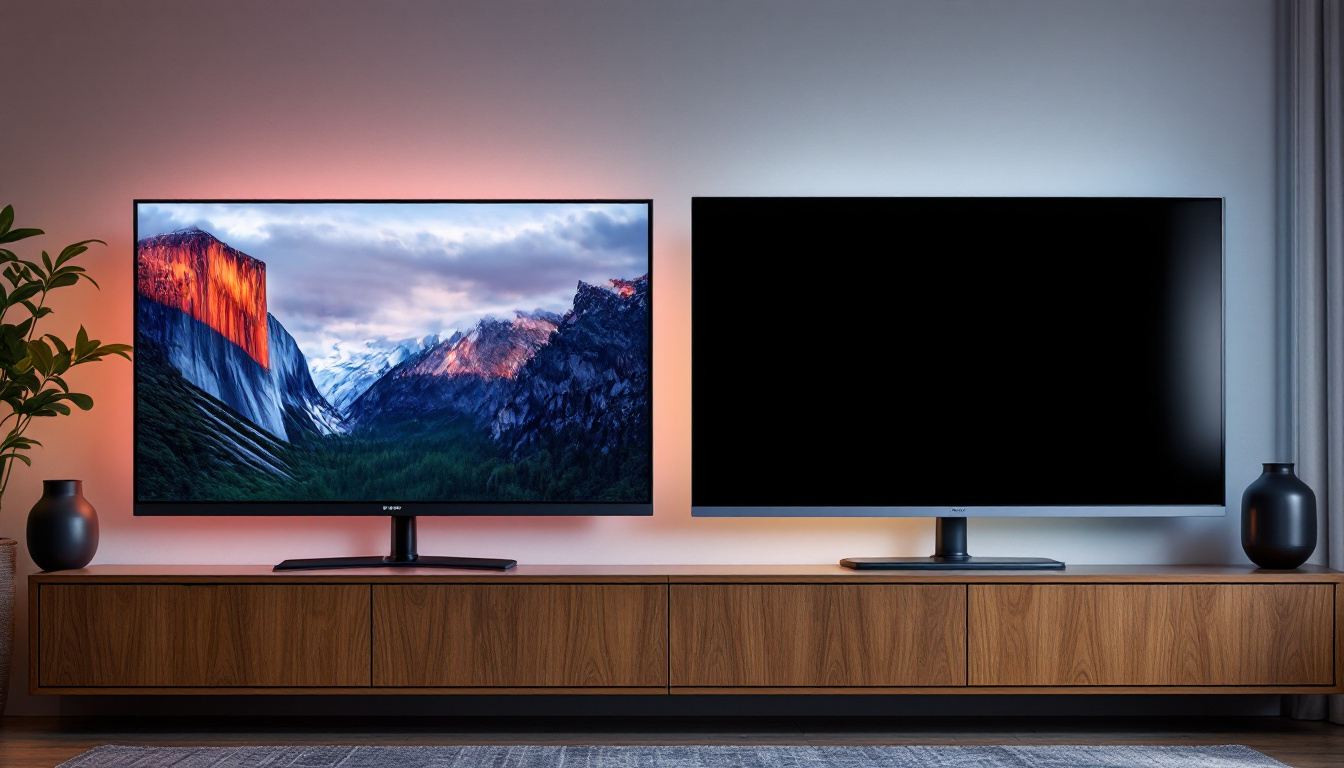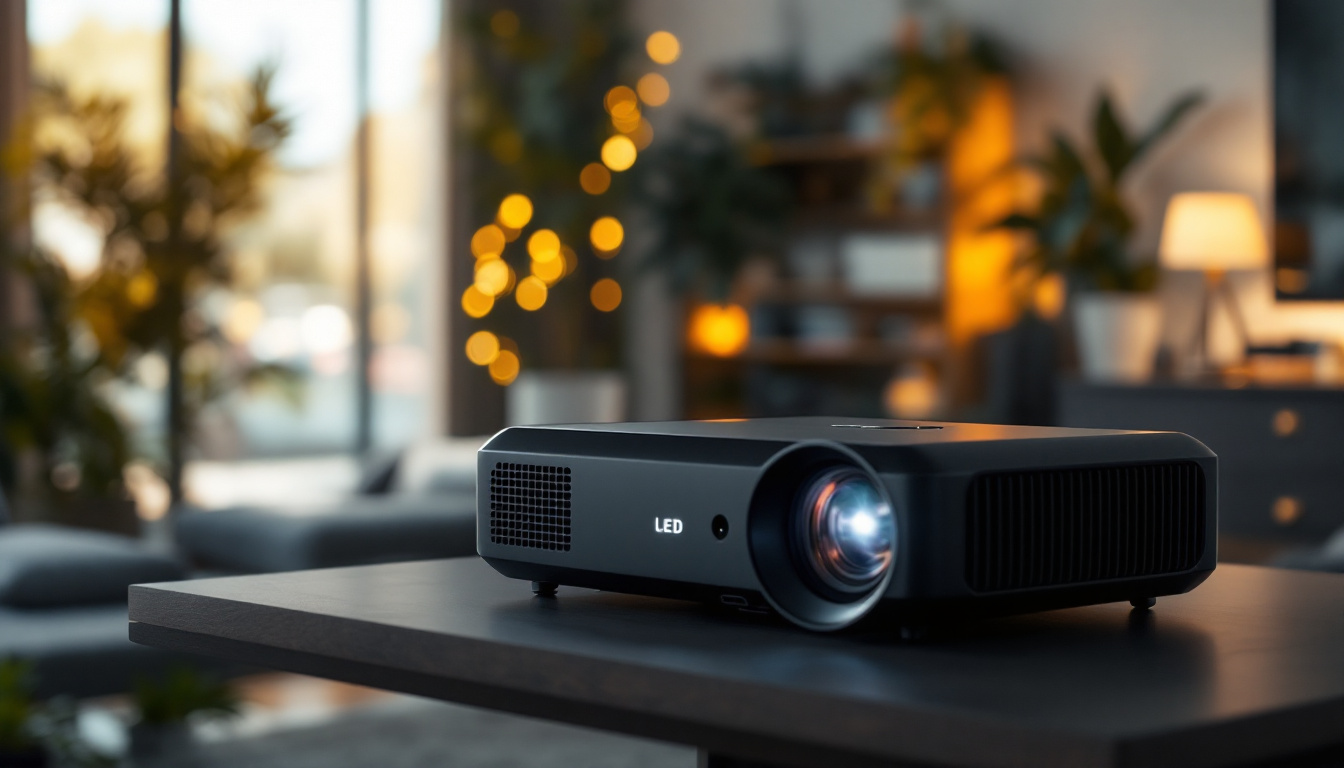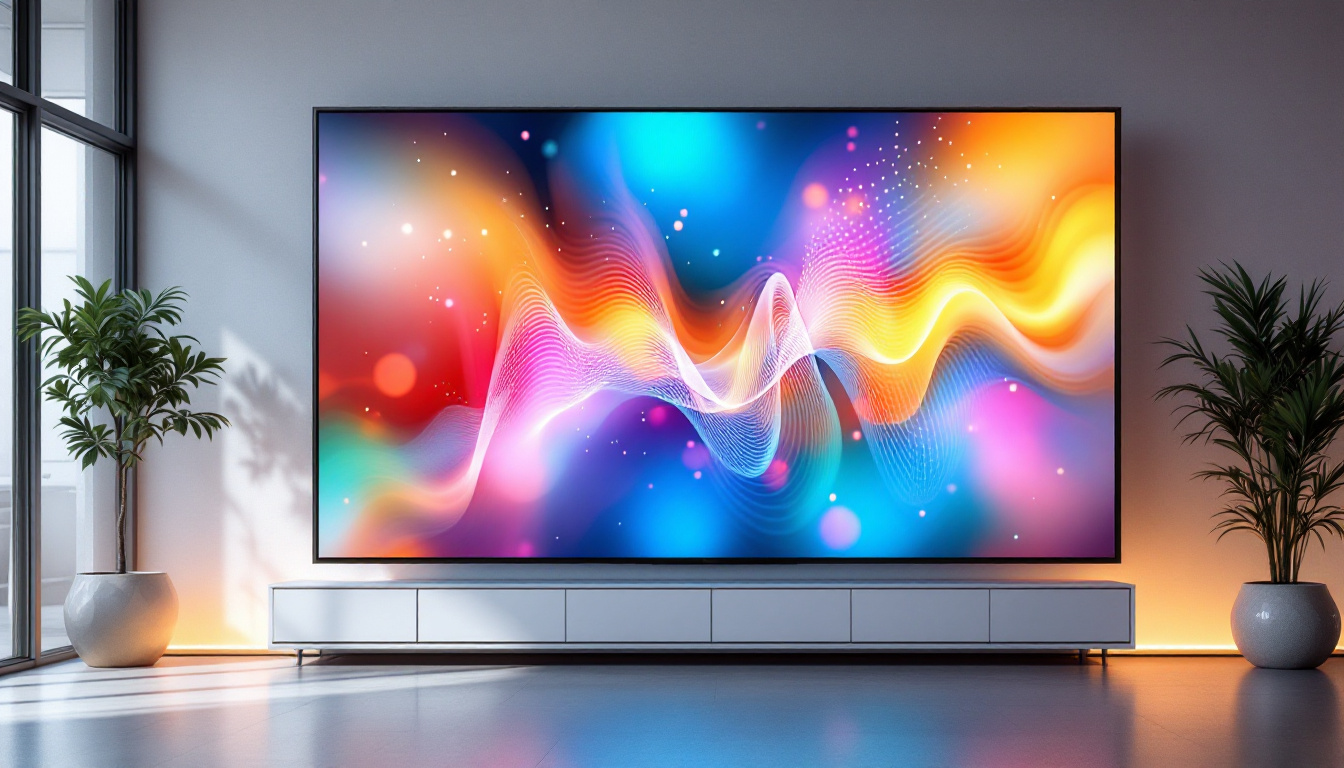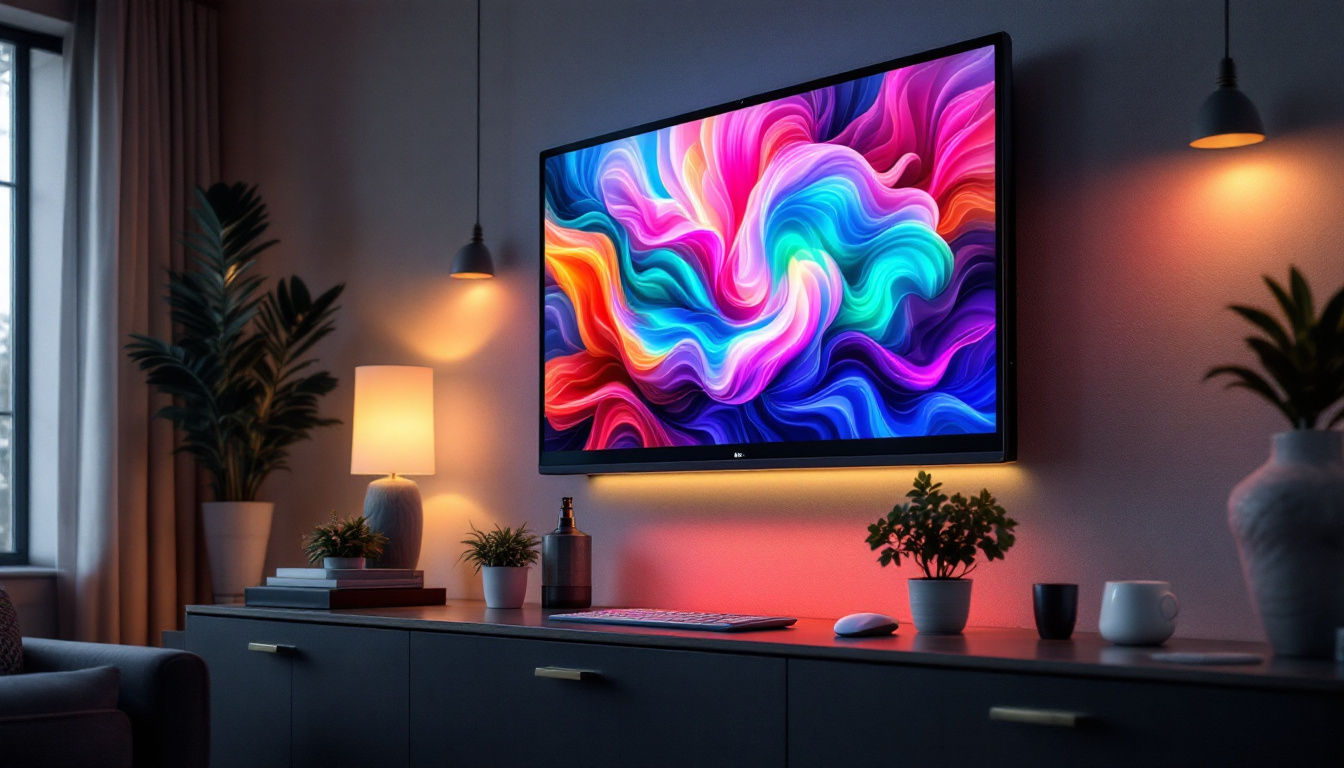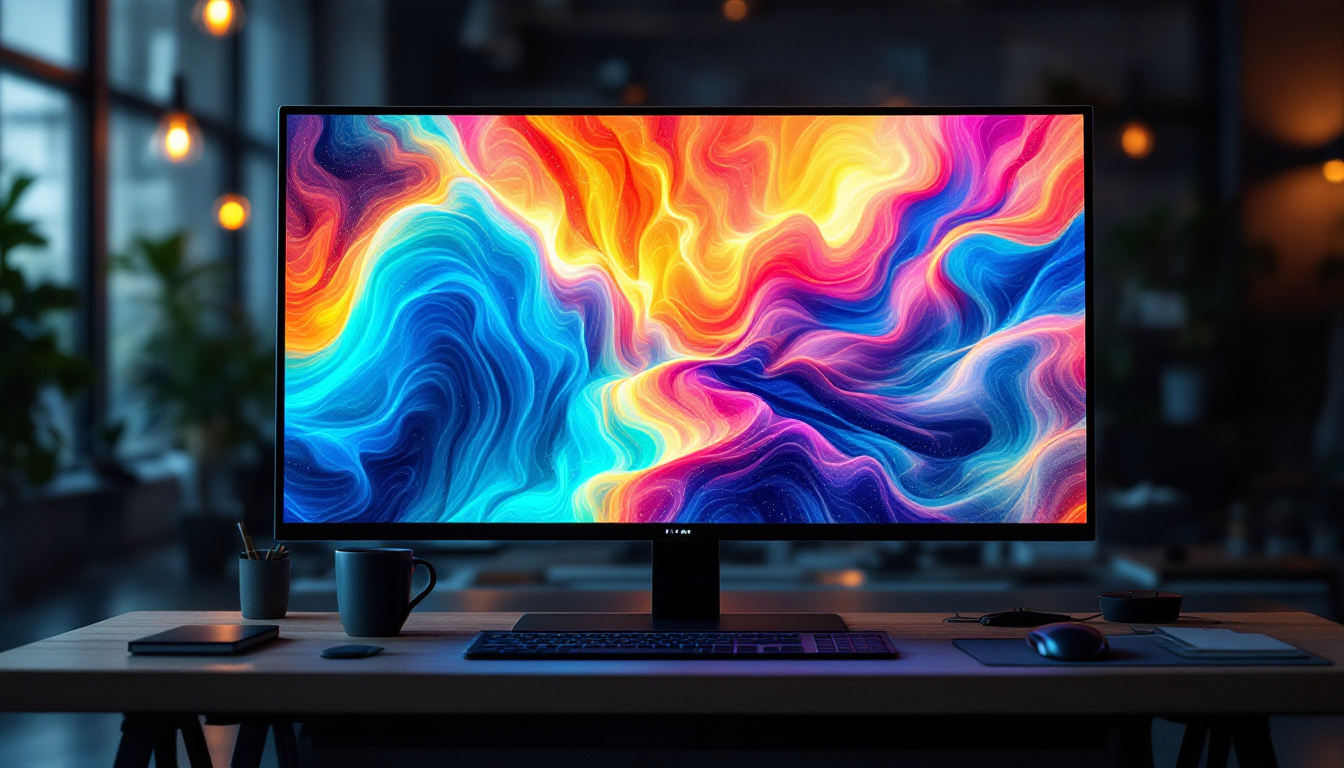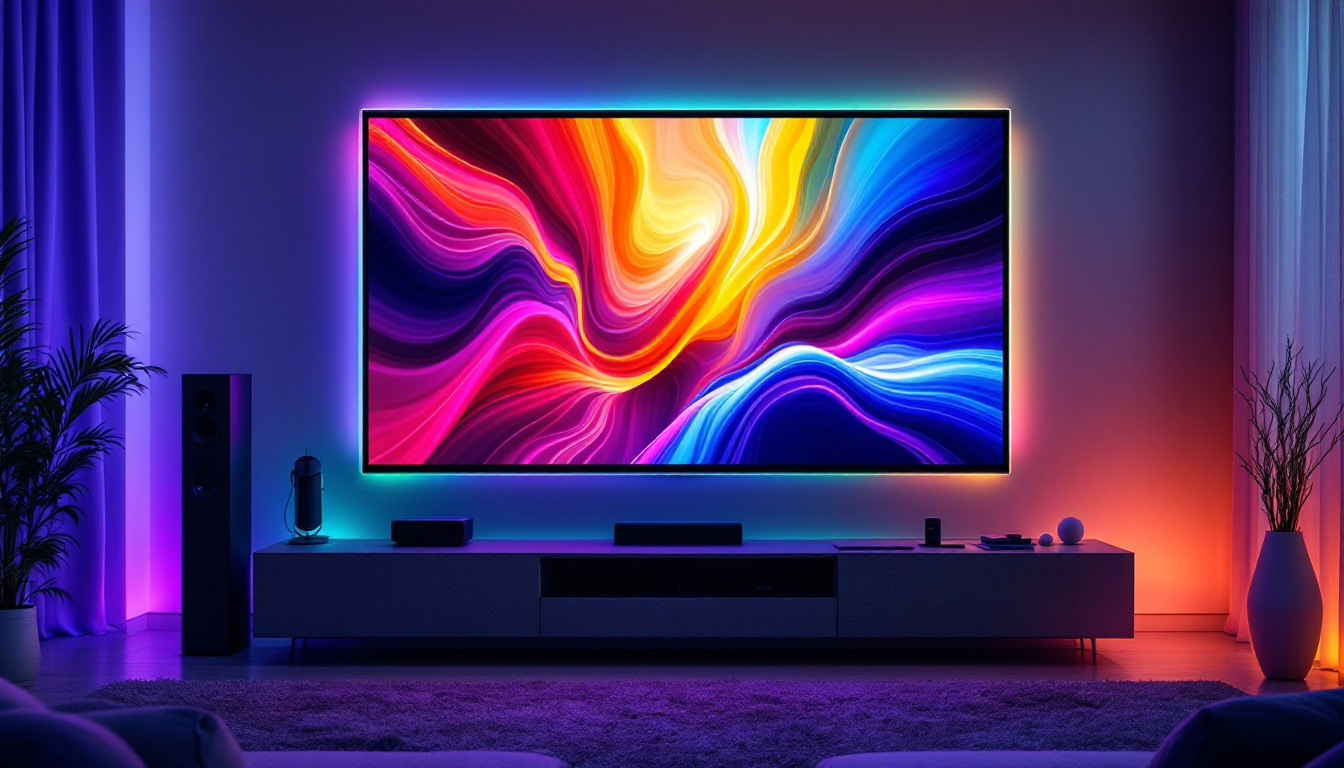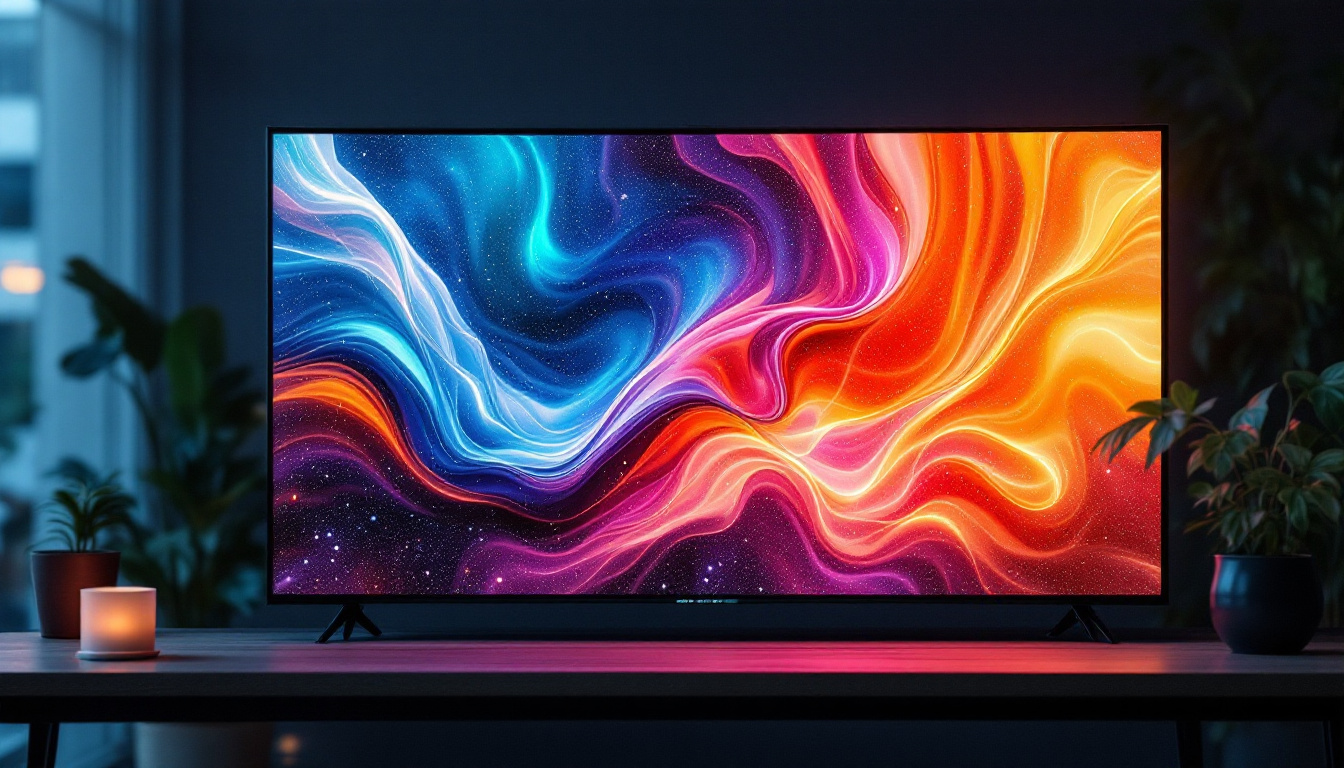In recent years, the popularity of curved monitors has surged, captivating both gamers and professionals alike. But do these monitors truly offer a significant advantage over traditional flat screens? This article delves into the nuances of curved monitors, particularly focusing on LED display technology, to help you determine whether they are worth the investment.
Understanding Curved Monitors
Curved monitors are designed to provide an immersive viewing experience by wrapping the screen around the viewer’s field of vision. This design aims to enhance depth perception and reduce distortion, making it an appealing option for various applications, from gaming to graphic design. The allure of curved monitors lies not just in their aesthetics but also in their ability to create a more engaging interaction with the content displayed, drawing viewers into the experience rather than merely presenting it flatly.
The Science Behind Curvature
The curvature of a monitor is measured in radius, typically expressed in millimeters. A lower radius indicates a more pronounced curve, which can enhance the immersive experience. The idea is that by curving the screen, the distance from the viewer’s eyes to the edges of the screen is minimized, creating a more uniform viewing distance across the entire display. This design principle is rooted in human visual perception; our eyes naturally perceive depth and dimension better when viewing objects that are slightly curved rather than flat.
Moreover, the curvature can help reduce glare and reflections, as the angle at which light hits the screen is altered. This can be particularly beneficial in brightly lit environments where reflections can detract from the viewing experience. Additionally, the curvature can help in reducing eye strain during prolonged use, as it allows for a more comfortable viewing angle, making it easier to take in the entire screen without excessive head movement.
Types of Curved Monitors
Curved monitors come in various types, primarily distinguished by their size, curvature, and panel technology. The most common types include:
- Gaming Monitors: These often feature a high refresh rate and low response time, catering specifically to gamers seeking smooth visuals. With advancements in technology, many gaming monitors now also support adaptive sync technologies like NVIDIA G-Sync and AMD FreeSync, which further enhance the gaming experience by eliminating screen tearing.
- Professional Monitors: Designed for graphic designers and video editors, these monitors prioritize color accuracy and resolution. Many professional models come factory-calibrated and support a wide color gamut, ensuring that what you see on screen is true to life, which is crucial for tasks that require precision.
- General Use Monitors: Suitable for everyday tasks, these monitors strike a balance between performance and cost. They are ideal for office environments and home use, providing a comfortable viewing experience for web browsing, document editing, and streaming media.
Each type serves a different purpose, and understanding the distinctions can help users select the right monitor for their needs. Additionally, some manufacturers are now experimenting with ultra-wide curved monitors, which offer an even more expansive field of view, making them perfect for multitasking or immersive gaming. These monitors can replace a dual-monitor setup, providing seamless transitions between applications and enhancing productivity.
LED Display Technology Explained
LED (Light Emitting Diode) display technology has revolutionized the way screens are built and viewed. Unlike traditional LCDs that use fluorescent backlighting, LED displays utilize numerous tiny diodes to produce light, resulting in brighter images and more vibrant colors. This advancement has not only transformed consumer electronics but has also influenced industries such as advertising, gaming, and professional media production, where visual fidelity is paramount.
Benefits of LED Displays
LED displays offer several advantages over their LCD counterparts, including:
- Improved Brightness: LED technology allows for higher brightness levels, making displays more visible in various lighting conditions.
- Better Energy Efficiency: LED monitors consume less power, which can lead to lower electricity bills over time.
- enhanced color accuracy: With a wider color gamut, LED displays can reproduce colors more accurately, which is crucial for graphic design and photography.
These benefits make LED displays a popular choice for both casual users and professionals who require high-quality visuals. Furthermore, the longevity of LED technology means that these displays tend to have a longer lifespan compared to traditional screens, reducing the frequency of replacements and contributing to a more sustainable approach to electronics consumption.
Curved LED Monitors: The Best of Both Worlds
Combining the advantages of curved screens with LED technology results in monitors that offer an unparalleled viewing experience. Curved LED monitors are particularly beneficial for:
- Gaming: The immersive experience provided by a curved screen, combined with the vibrant colors of LED technology, creates a captivating gaming environment.
- Multitasking: The curvature allows for a more natural viewing angle, making it easier to manage multiple windows and applications simultaneously.
- Creative Work: For designers and editors, the enhanced color accuracy and depth perception can significantly improve workflow and output quality.
Moreover, the ergonomic design of curved LED monitors can reduce eye strain during extended use, making them a healthier option for those who spend long hours in front of a screen. This feature is particularly appealing in today’s remote work culture, where professionals often rely on their monitors for video conferencing, presentations, and collaborative projects. As technology continues to advance, we can expect even more innovative features to emerge in the realm of LED displays, further enhancing user experience and productivity.
Do Curved Monitors Really Make a Difference?
The question of whether curved monitors make a difference is subjective and depends on individual preferences and use cases. However, several factors can influence the overall experience.
Immersion and Engagement
One of the primary benefits of curved monitors is the enhanced sense of immersion. The curvature can draw viewers into the content, making it feel more engaging. This is especially true for gaming and movie-watching, where the goal is to create a captivating experience.
Research has shown that users often report feeling more connected to the content on a curved screen compared to a flat one. This psychological effect can enhance enjoyment and satisfaction, particularly in entertainment scenarios.
Comfort and Eye Strain
Another consideration is the potential for reduced eye strain. Curved monitors can help maintain a more natural viewing angle, which may lead to less discomfort during extended use. The curvature can also minimize the need for users to adjust their head position, which can be beneficial for those who spend long hours in front of a screen.
However, it is essential to note that not everyone experiences reduced eye strain with curved monitors. Individual preferences and anatomical differences play a significant role in how comfortable a person feels while using a particular screen type.
Choosing the Right Curved Monitor
When considering a curved monitor, several factors should be taken into account to ensure that the selected model meets your needs.
Screen Size and Resolution
Screen size and resolution are critical factors that can significantly impact the viewing experience. Larger screens can provide a more immersive experience, while higher resolutions enhance clarity and detail. For gaming and creative work, a minimum resolution of 1440p is often recommended, while 4K is ideal for those seeking the highest quality.
Additionally, the screen size should correspond to the viewing distance. A larger monitor may be more suitable for users who sit further away, while a smaller screen may suffice for closer viewing.
Refresh Rate and Response Time
For gamers, refresh rate and response time are essential specifications. A higher refresh rate (e.g., 144Hz or 240Hz) allows for smoother motion, which can be crucial in fast-paced gaming scenarios. Similarly, a lower response time reduces motion blur, enhancing the overall gaming experience.
For non-gaming applications, these specifications may be less critical, but they can still contribute to a smoother experience when multitasking or watching videos.
Budget Considerations
Curved monitors come in a wide range of prices, and it is essential to establish a budget before making a purchase. While high-end models offer advanced features and superior performance, there are also more affordable options that provide excellent value for everyday use.
It is advisable to compare features and read reviews to find a monitor that fits within the budget while still meeting the necessary requirements.
Conclusion: Are Curved Monitors Worth It?
Ultimately, the decision to invest in a curved monitor depends on individual preferences and specific use cases. For gamers and creative professionals, the immersive experience and enhanced visuals offered by curved LED monitors can be well worth the investment. However, for casual users or those on a tight budget, a high-quality flat monitor may suffice.
As technology continues to evolve, the lines between curved and flat monitors may blur, but the choice will always come down to personal preference. Understanding the advantages and limitations of curved monitors can help users make informed decisions that align with their needs and expectations.
In conclusion, whether you opt for a curved monitor or stick with a flat display, the key is to choose a screen that enhances your viewing experience and meets your specific requirements. With the right information, users can navigate the myriad of options available and find the perfect monitor for their needs.
Discover the Future of Visual Experience with LumenMatrix
Ready to elevate your viewing experience with the latest in LED display technology? LumenMatrix is at the forefront of innovation, offering a wide array of LED display solutions that cater to your every need. Whether you’re looking to enhance your gaming setup, captivate your audience with dynamic digital signage, or empower your business communications, LumenMatrix has the cutting-edge technology to bring your vision to life. Don’t settle for less—immerse yourself in the world of vibrant colors and unparalleled clarity. Check out LumenMatrix LED Display Solutions today and witness the transformation in your visual engagement.


